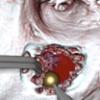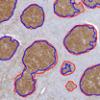Two surgeons from Central Ohio recently traveled to Nicaragua on a humanitarian mission to treat children with serious ear, nose and throat conditions. However, this year they brought along some help in the form of high-tech equipment designed to appeal to a generation that grew up playing video games – not to entertain the children, but to train the local doctors and medical students.
Press Releases
Primary tabs
A research group led by Ohio State’s Metin Gurcan, Ph.D., has been leveraging Ohio Supercomputer Center resources to develop a computer-assisted diagnosis tool to improve grading of a common cancer.
Worried about her high fever and severe abdominal pain, a young couple rushed their baby daughter to the emergency department of Nationwide Children’s Hospital. Physicians there found a lump in her belly, and, after examining X-rays and blood work, confirmed the parents’ worst fear: their 18-month-old little girl had neuroblastoma, a rare pediatric cancer that involves the adrenal glands.
A new online publication unveiled this week, the Journal Of Computational Science Education (JOCSE), will publish peer-reviewed articles focusing on various aspects of teaching computational science – the application of computing, especially supercomputing, to the solution of complex scientific and engineering problems.
Officials from the Ohio Supercomputer Center and R Systems announced a collaborative partnership that allows companies to gain easier access to both OSC’s Blue Collar Computing programs and R Systems’ computational resources and expertise.
U.S. Sen. Sherrod Brown (D-OH) today visited the Ohio Supercomputer Center (OSC) to announce that $355,000 has been awarded to OSC and PolymerOhio, Inc. by the U.S. Department of Commerce. Brown was joined by Wayne Earley, president and CEO of PolymerOhio, Steve Gordon, Co-Executive Director of the Ohio Supercomputer Center, Carol Whitacre, Vice President of Research at The Ohio State University, and Ann O’Beay, Chief Technology Officer at the Ohio Board of Regents.
The Ohio State University and Ohio Supercomputer Center have received a four-year, $1.675 million federal grant to develop a computer tool that researchers, government leaders and the public can use to study and understand changes in energy-related technology, policy and pricing.
With the ASR, researchers can produce a series of images that map a variety of weather measurements. Each of the map sets below display evening and morning measurements for Sept. 12-13.



